Migration paths computed by PhyloGeographer are theoretical, based on a set of inputs from YFull and ancient samples which are not uniformly sampled across the world.
The algorithm is a good faith attempt to derive an objective path, according to a Methodology, and may not always compute a path that makes sense, depending on the complexity of the distribution.
Each month the paths are updated based on latest YFull samples. I hope you find this free resource useful for your own research.
By 3400 BC, there were 10 major subclades of N, stretching from Russia to East Asia.
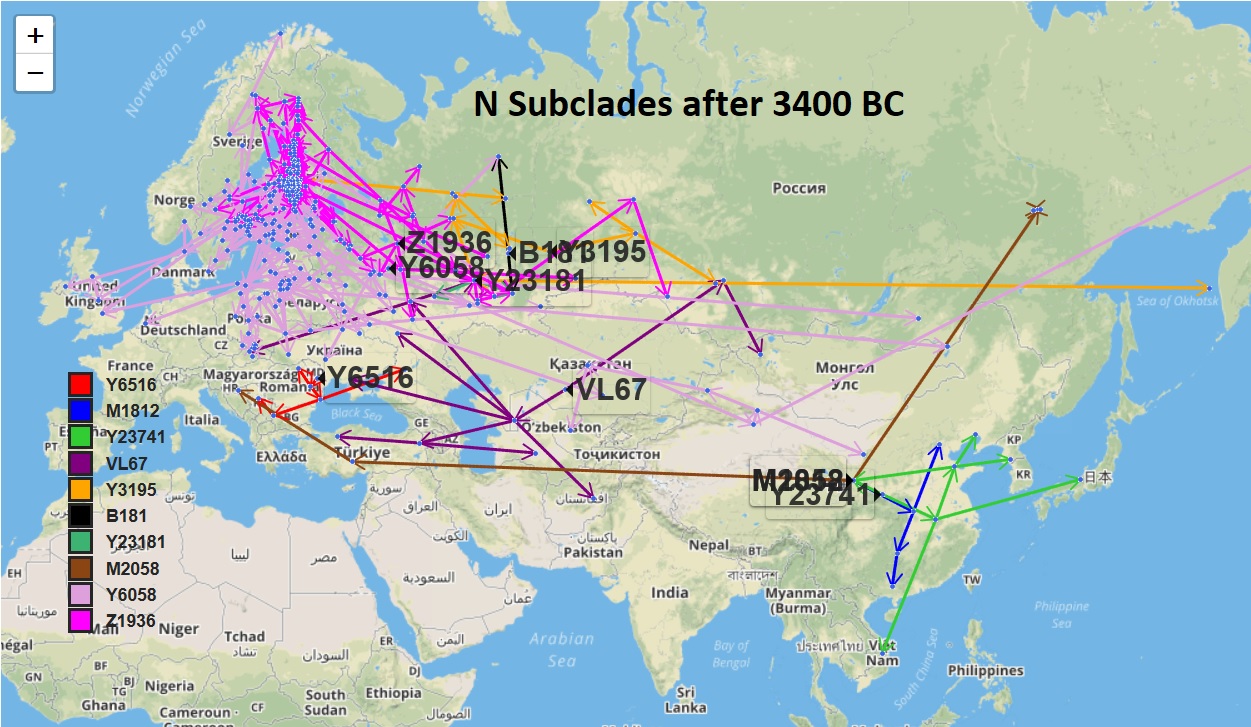
While the majority of these lineages are in Central Europe and Russia, the progenitor of haplogroup N likely lived as far east as China during the bottleneck from 37,000 to 22,000 years ago.
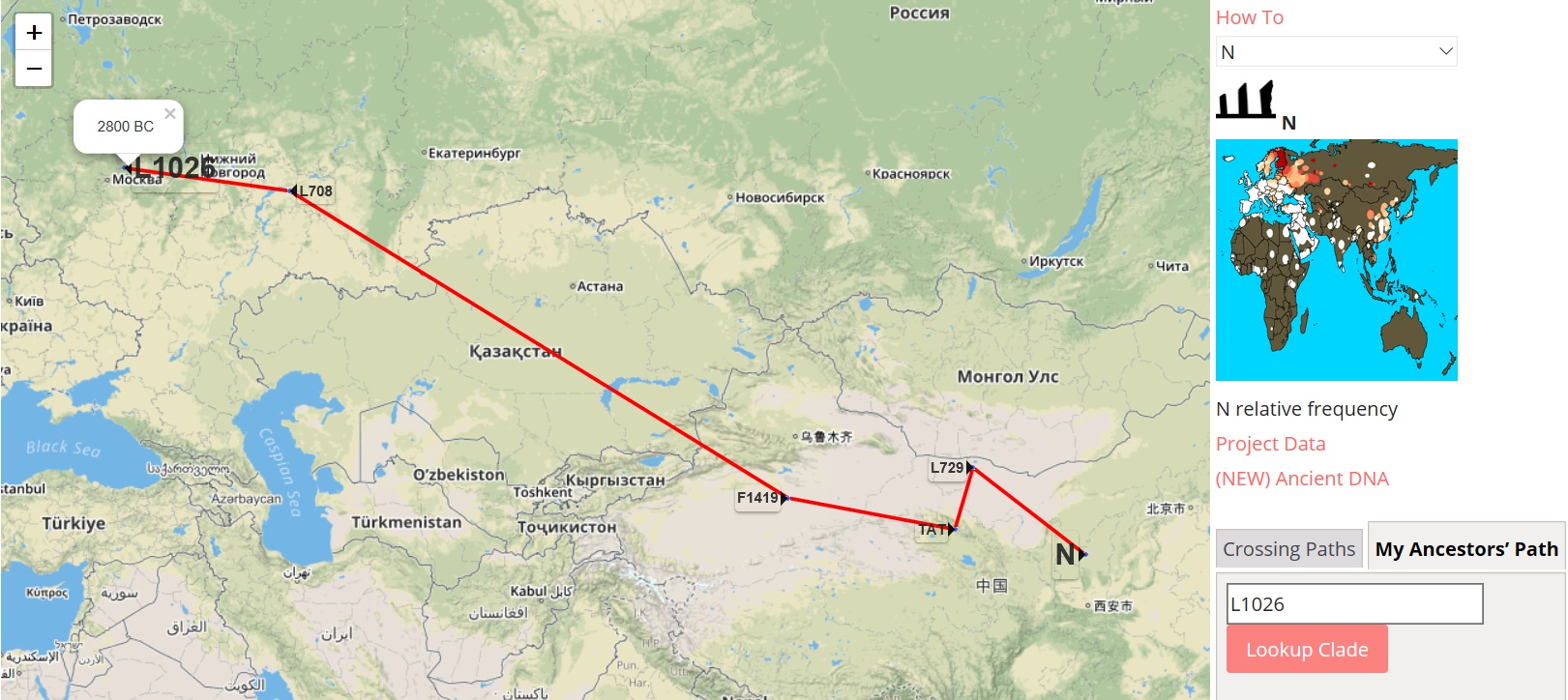
This article will not address the evidence for the origin of N or the subsequent migration across Central Asia but will instead focus on the path and timing of N migrations through Russia to Finland and the Baltic.
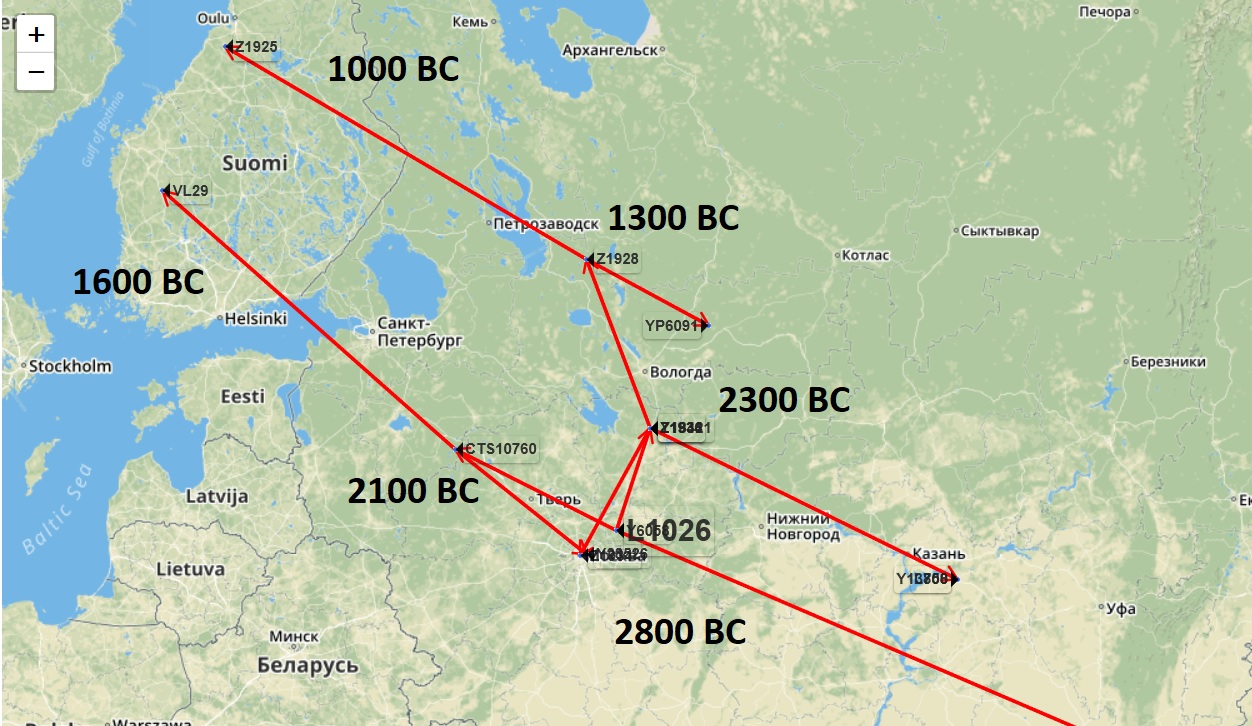
Two child lineages of Russian L1026 form the bulk of Baltic N diversity. These lineages split in 2800 BC and sired some lineages which stayed in Russia while others went to the Baltic by a NW route. Z1925 appears to have travelled a more northerly route around Lake Onega, while VL29 migrated directly from the direction of Moscow. Both appear to have lineages which began diversifying in Finland and/or Norrbotten County, Sweden between 1600-1000 BC.
The theoretical migration of N to the Baltic as computed by PhyloGeographer differs in several ways from the Eupedia map from 2017.
1) PhyloGeographer has a more northern route, bypassing Estonia and only entering Estonia later from Finland. This conforms to linguistic theory of Northern and Southern Estonian languages having entered Estonia through separate waves of Finnic speakers.
2) PhyloGeographer has a later date for the entry of N to the Baltic with 1600 BC for VL29 and 1000 BC for Z1925. However in each case their ancestors could have been there as early as 2100 BC and 1300 BC if the first man of each bottleneck undertook the migration. Maciamo implies that L1026 were associated with Kiukainen culture but the TMRCAs of these first N in Finland more likely means they ended that culture. This also makes sense because their migration path has them coming from the Fatyanovo-Bolanovo cultural zone, an eastern offshoot of Corded Ware which exploited copper.
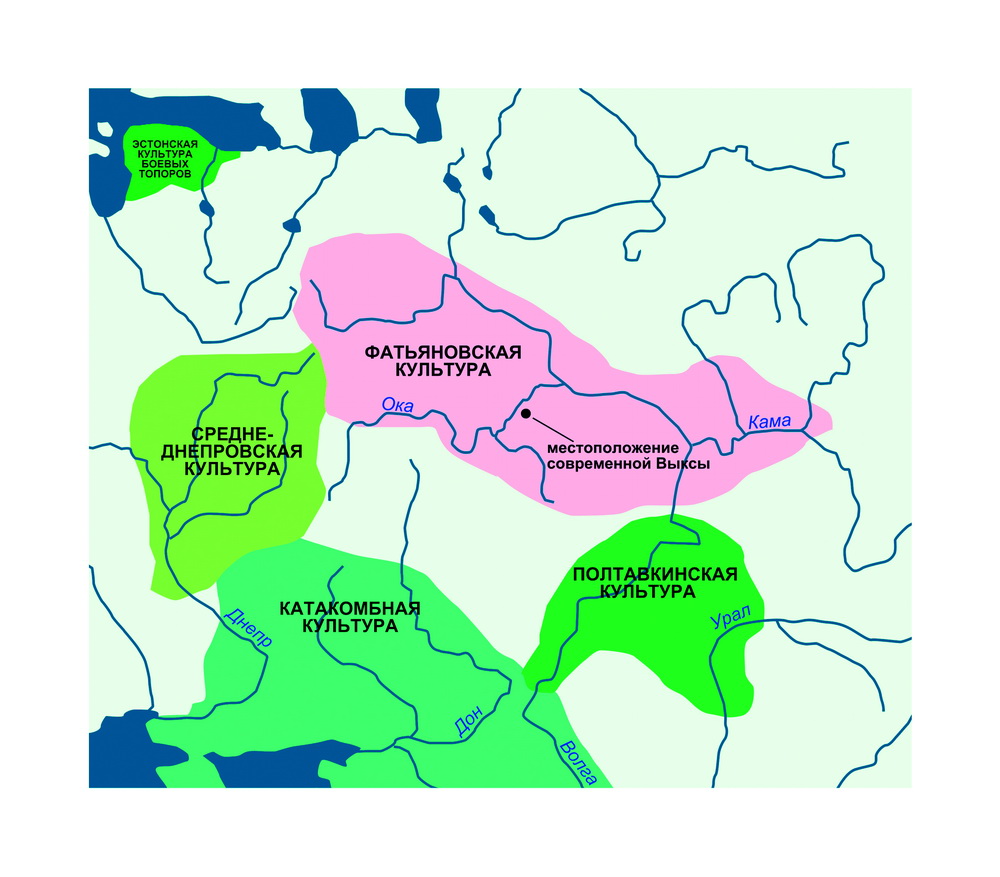
Z1936>Z1934>Z1928>Z1925
Z1936 and child Z1934 have TMRCA 2300 BC and both are computed to have lived in Yaroslav. By 1300 BC child Z1928 diversified further NW, east of Lake Onega.
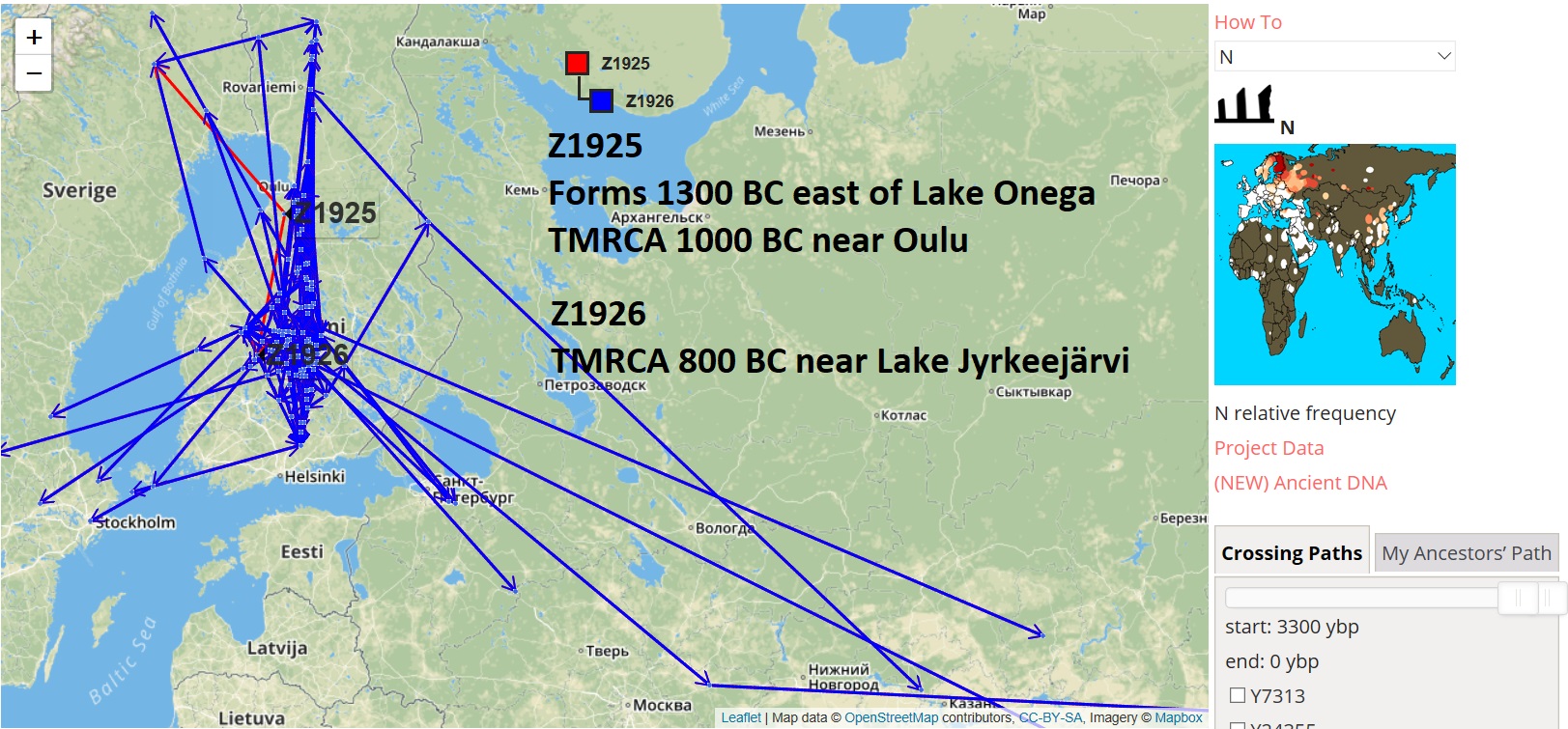
By 1000 BC, Z1925 is the first of these lineages to diversify in Finland. Note the lack of migration paths to Estonia and only limited migration outside of Finland to Russia and Sweden. Perhaps the expansion of this lineage to the south and western coasts was checked by the dominance of their kinsmen VL29 who may have gotten there first. So they stayed inland and went to the mountainous north. We will examine sibling VL29 next, starting with its parent CTS10760.
Y6058>CTS10760>VL29
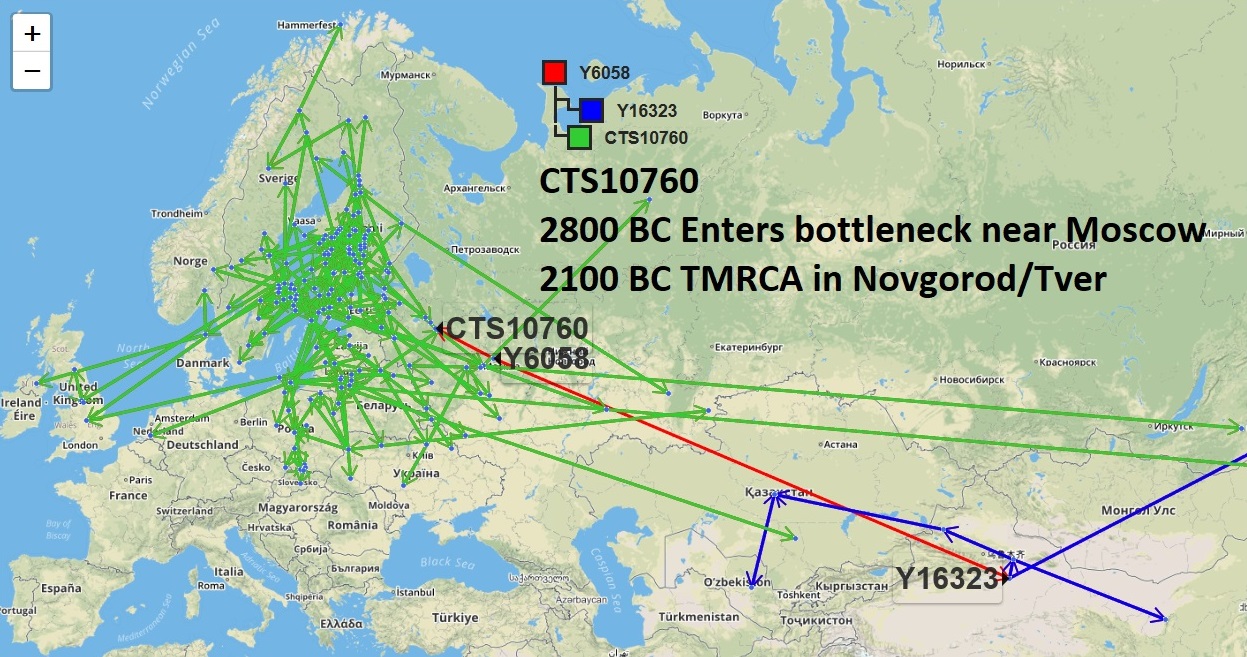
Y6058 is computed to have lived near Moscow, in the same place as its parent L1026. Its child lineage, CTS10760 migrated further NW over the next 700 years. The child lineage of CTS10760 named VL29 then migrated to Finland, whose diversification is shown below.

The earliest reliable presence of Y6058 in Finland is 1600 BC when it appears child lineage VL29 diversified in Ostrobothnia. But the lineage could have entered anytime after 2100 BC when the bottleneck started in Novgorod/Tver. This man sired two lineages, CTS9976 (blue) with greater diversity in Finland and Z4908 (green) which first diversified around Stockholm, Sweden and went on to establish subclades all over the Baltic, except in central and northern Finland and Pomerania.
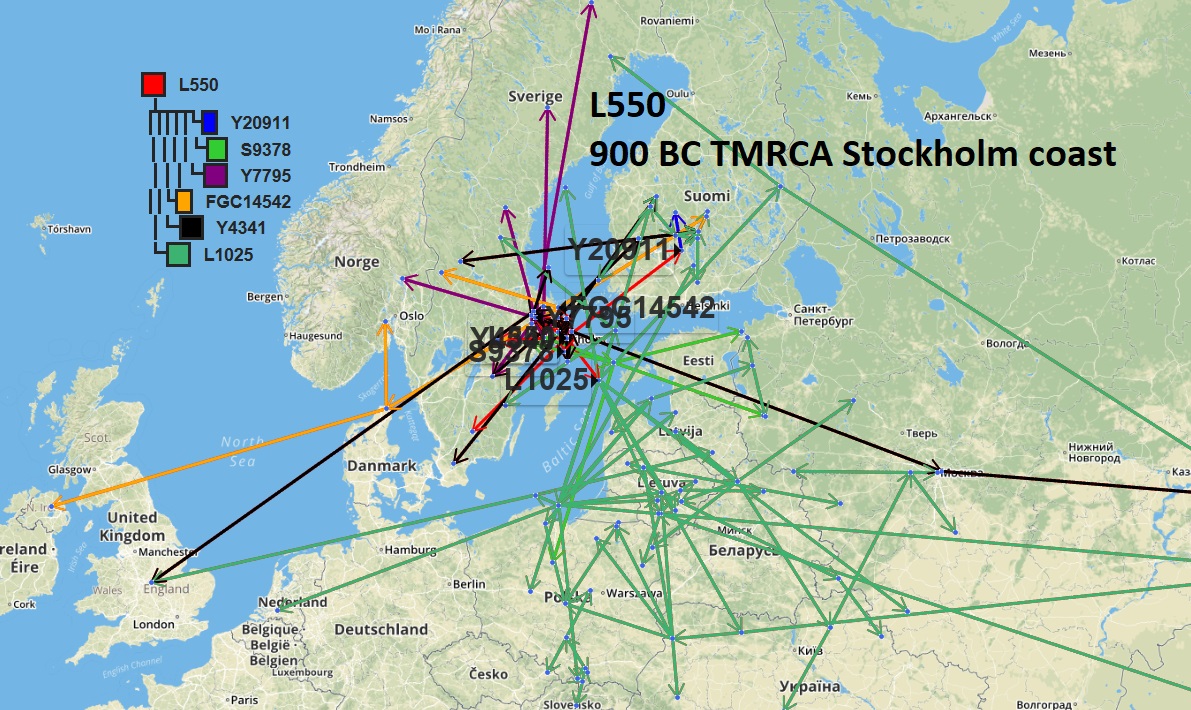
In a separate article I address the migrations of L550's child L1025, which may have been associated with the Nordic Bronze Age or the Baltic cultures it subsequently settled amongst. L1025 underwent major diversification throughout the Baltic and Gulf of Bothnia but especially in Latvia, Lithuania, Belarus and Poland in 600 BC.
Bronze Connection
The genetic circumstantial evidence for the earliest presence in Finland of Haplogroup N corresponds in time to the end of the Kiukainen culture, 1500-1300 BC. This was the last Stone Age culture of the region.
"The Bronze Age began some time after 1500 BC. The coastal regions of Finland were a part of the Nordic Bronze Culture, whereas in the inland regions the influences came from the bronze-using cultures of northern and eastern Russia." - https://en.wikipedia.org/wiki/History_of_Finland
Finno-Ugric Genetic Links
The association with Haplogroup N and Uralic languages has long been discussed. Complicating the picture are deep interrelationships between Uralic and Turkic groups. In this article I examine the circumstantial evidence only from some of the samples on YFull below M2019, the sibling of L1026 and the only N subclade on YFull with Hungarian samples.
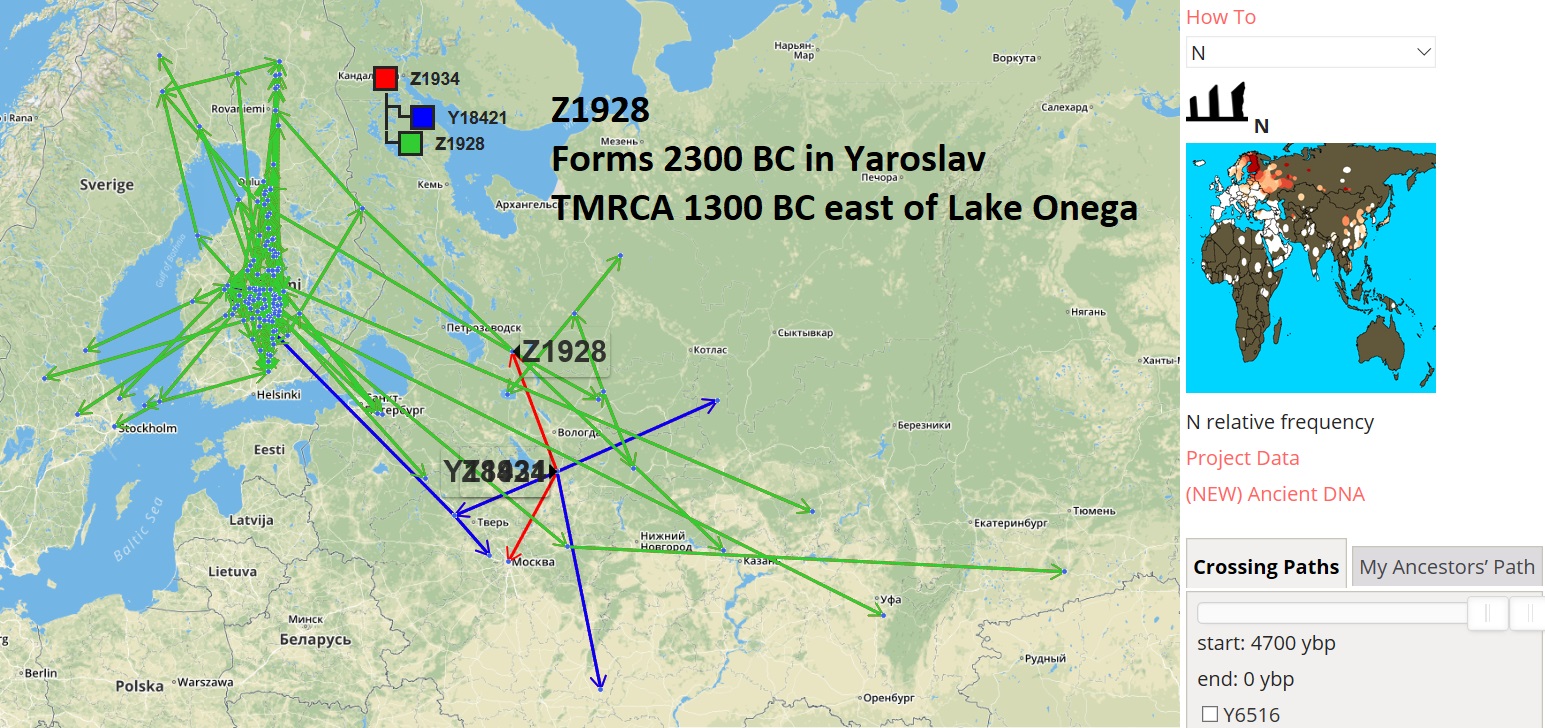
I very much agree with the main informations given here. From the Pink/Green map I will give more info.
The green area cover Don-Volga-Caucasia. From this area of Coast of BlackSea it was a big flood 6-8000 years ago. This made the first heavy migration we know to Scandinavia from east. In ANDRUPNE in Latvia its found SunCalender system est. from 6000 y.ago. This has been connected to the “SunCrossPeople”.
At Kali at Øsel / Sarrema island it fell down a Meteor appr. 5000 years ago with damage power similar to the Hiroshima A-Bomb. This can explain a later more easy migration to Estonia. The Green map area was much Caucasian people dominated. This fit with that large area a ro
und Estonia also today has the worlds most dominant Caucasian type people.
Around April 20.2021 I got some comments to my writings… :
At some time during the ice meltings over Norse area : England, Doggerland, Jylland, Fyn, Bornholm – was one landmass. The land between Stockholm and Bohus was low castles sea-level land. This way the warm Golf stream went into southern ØSTERSJØEN / Baltic Sea (=? “Belt Sea”).
The warm water made a good living area up to RIGA BAY and Finland South coast. The warm stream turned west and out passed Bohus. It than developed Southern Norwegian coast to a good warm area. This also explain the deep sea at the Norwegian southern coast.
It also explain very heavy an area of one culture, from millions of rock carvings from Denmark-Bornholm and ALL coast west and north to Alta and Kola. All this coast had been free from ice mostly before 12.000 years ago.
My “corrector” also stated that this “one” people was in groups much called the Goths and the Wends related from the DNA group of people called “I*, I1 and I3”. Also some mutated to N group. If right there are almost nobody of the normal etnic Norse people not covered with DNA to the very first People from 12000 years ago.
It look like they first arrived long before 12.000 years ago. Than from Black Sea via Balkan to Sardinia area. When land there was flooded, they went North and their culture is found from NiederSaxen and in all Scandinavia + east to RUSsland.
The name NORSE people and Norway came later from the “Kven” king Nor(r).
The RUS people was named from the Danish Red heared people from today’s Sweden.